Guest blogger Glen Kessler, an artist and teacher, takes on the art schools and shares his thoughts on changing the very structure of learning.
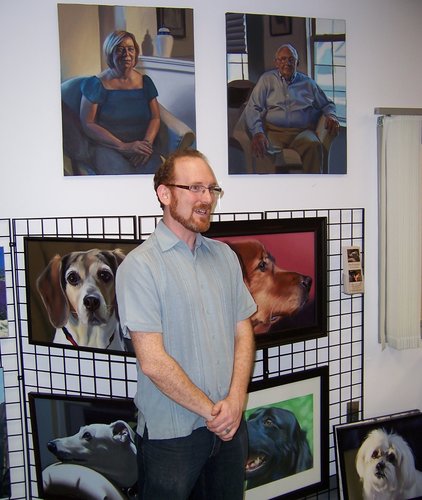
Painter and teacher Glen Kessler speaks about his art at a gallery opening.
Today, whether you’re taking art classes at a university or in open-enrollment classes/workshops at your local community center, you are most likely learning in the “a la carte” mode. You grab classes from a buffet of options as your interests dictate and hope to improve through the accumulation of lessons learned.
But is this model truly the best way to learn art? Some today argue strongly NO.
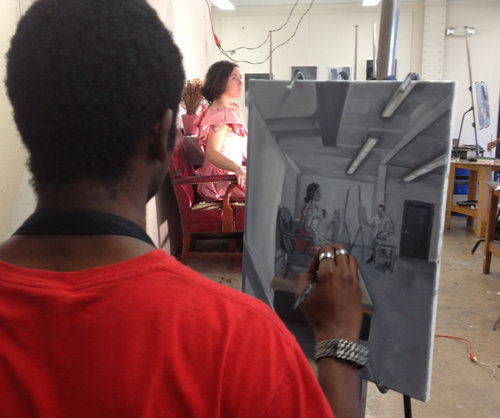
Universities wrestle constantly with the a la carte mode of offering classes (that is, how much freedom to give their students in crafting their schedules) versus enforcing a more regimented progression of classes with fewer electives. On the one side, freedom to choose likely means students are more engaged in the classes they take.
However, that freedom may mean that students graduate with holes in their knowledge. Dictating what students must take may guard against such holes. But administrations focused on their bottom line fear its possible rejection from a student body accustomed to more freedom.
Many art students are beginning to reject the notion that they need to pay upwards of $150,000 for a Bachelors degree only to graduate with spotty skills in what should be their professional field (and another $50,000+ for a Masters degree). But universities and art schools are slow to adapt to such changing sentiments, if they are even aware of them.

Open-enrollment art class students are also seeing a growing dissatisfaction in the randomness of a la carte learning. Students often enroll in seasonal weekly classes (8-10 week classes) that focus on a single lesson or method of working. Over the course of years, they may study with a number of different instructors, at different venues, and in different approaches.
That variety has its merits, but for many whose interest in art ranges from hobbyist to semi-professional, the results are more typically confusion and very slow growth. Many students attempt to add continuity by studying with a single instructor, only to find that the inherent nature of an 8-10 week class forces the teacher to “hit the reset button” each term.
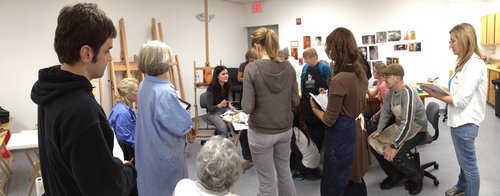
A savvy cadre of students, young and old, professional and hobbyist, have found schools around the country that offer a more cohesive, comprehensive curriculum…and often at a fraction of the cost of a university education. A quiet Atelier Movement is sweeping the country and world. Small schools from New York to Seattle, as well as internationally, are redefining art learning by looking to the past.
Classical learning, as it was defined in the 19th century, organized techniques into steps where one skill had to be mastered before moving onto the next. The result was some of history’s finest technicians. Today that classical learning is being combined with contemporary concepts to create what may be a new Renaissance in art-making.
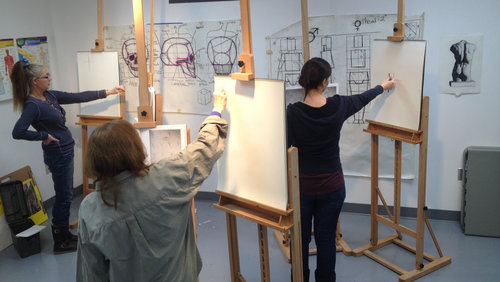
What we are seeing could be a leading indicator that perhaps the luster of Postmodernism is beginning to fade. The pluralism that has served as Postmodernism’s main attribute these past 30 years sought to champion the individual voice. However, with every artist speaking ostensibly their own language, true appreciation of the individual has been lost to the noisy anarchy that has been its result.
We may be seeking as a culture, and thus as artists, to return to some semblance of a shared language. For a visual medium like painting, it is to the observable world that we most logically turn.

Measurable skills, confidence, and shared imagery are all attributes of the Atelier Movement and its many schools. TRAC (The Representational Art Conference) held in Ventura, CA in March 2014 brought together many of the artists and teachers at the forefront of this movement, as do sites like Art Renewal Center, a database for trusted Ateliers.
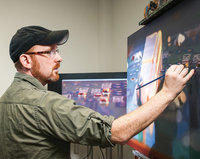 Glen Kessler is a painter and teacher based in the Washington, DC area. He is also the founder of The Glen Kessler Atelier in Rockville, MD, which offers a 3-year program that takes students from basics through Master level art-making in a cohesive and comprehensive curriculum.
Glen Kessler is a painter and teacher based in the Washington, DC area. He is also the founder of The Glen Kessler Atelier in Rockville, MD, which offers a 3-year program that takes students from basics through Master level art-making in a cohesive and comprehensive curriculum.


Thank you, Glen! I have complained as a student and as a teacher of art, that the classic, basic training is sorely missing. I begged, when a student to know, and had very few professors who taught (or perhaps they didn’t know) the classic cohesive whole. Once you have a foundation then creativity and style can be made intelligently- putting the victorian trim on the 2×4 studs is foolish, to continue the metaphore.
I cheer the Ateliers cropping up all over and wish I could have gone that route myself. Had I known…
Michelle, It is precisely because of voices like yours, echoing across the contemporary art landscape, that this movement is gaining momentum. All culture is cyclical. I believe we are nearing the end of one cycle, and the beginning of another.
You are most likely right that your teachers did not know how to teach techniques. In the Post-WWII art world, ‘technique’ was a foul word. When concepts are not taught for a generation or more we run the risk of losing touch with it entirely. It is for that reason I feel comfortable thinking of this as a Renaissance of sorts.
BTW, most of my Academy students are in their 50s-70s. Learning never stops!
This would have been helpful 20 years ago; I would have saved a ton of money. However, I do not regret having gone to college for my BFA, but I do think a change in how art is taught is important. I hope this new movement can regain the energy and enthusiasm that specialized art academies once offered.
Marko, Thank you for your comments. I believe that we will indeed see a return to technique, more recognizable imagery, and clearer narratives. This anarchic period in art cannot sustain. We’ve seen the same issue in print media. Initially it was great having ‘citizen reporters’/bloggers presenting news outside of the established newspaper hegemony. Unfortunately now there are so many voices, one doesn’t know whose to trust. A return to some level of standards is essential for the medium to continue.
Glen — You said, “What we are seeing could be a leading indicator that perhaps the luster of Postmodernism is beginning to fade.”
Ross and Yoder have been preaching that rhetoric for over a decade. Yet the works of art they loathe continue to do well at auction houses and galleries. I think there is room for every direction. Frankly, the ‘us vs. them’ rhetoric is juvenile at best. Furthermore, suggesting that the public has been ‘duped’, as Ross has done in the past, is a tad silly as well. People know what they like. I personally like a wide range of art… I also know of MANY artists that can jump from one direction to the other with ease… including some of the artists ARC has supported over the years.
As one who was never able to afford college, I can attest to the fact that a la carte learning is extremely slow and leaves a lot of holes in an artists training. Drawing skills, painting skills, networking skills and business savvy are all required to succeed in the art world. When I was in my early 20’s the Artists League in New York , sadly still financially out of reach for me, seemed to offer a program that provided good training for artists in a non degree type of facility. I don’t know if that’s still the case.
I’m now enrolled in the Atelier program with Glen and I’m hitting the reset button in a different way. Although I’ve been painting for many years, I still struggle with basic drawing technique and color choice. I’m learning how to stand properly at an easel, how to draw accurately and will be learning about the subtleties of color. I want to get to the point where I can handle the mechanics of painting easily and then concentrate on bringing meaning and life to my paintings. Perhaps the scattershot approach to my art education is the result of a Post Modernist sensibility or maybe it was my own choice of classes. Either way I’m glad to be starting on a very structured path with an excellent teacher.
Like Cathy, I am also enrolled in Glen’s course. I attended art school (R.I.S.D) in my 20s and dropped out, feeling a lack of focus and direction. After a smattering of courses, the teachers gave you free rein and a studio. I didn’t know what to do with myself and no clear idea how to take my longing to paint and my talent with color and form to create any coherent expression that made sense in a larger context. It took another 20 years before I dared to pick up a palette and brush again. I feel this atelier approach could fill in the missing gaps and complete the path of learning I dropped many years ago. I think that the atelier approach went out of fashion because artists felt it constrained them to fit to a certain approach of slick rendering and smooth finish. My hunch though is that it is going to have a different effect and give me a basic confidence from which I can leap into uncharted territories. Much the way it did with the great masters of the 20th century